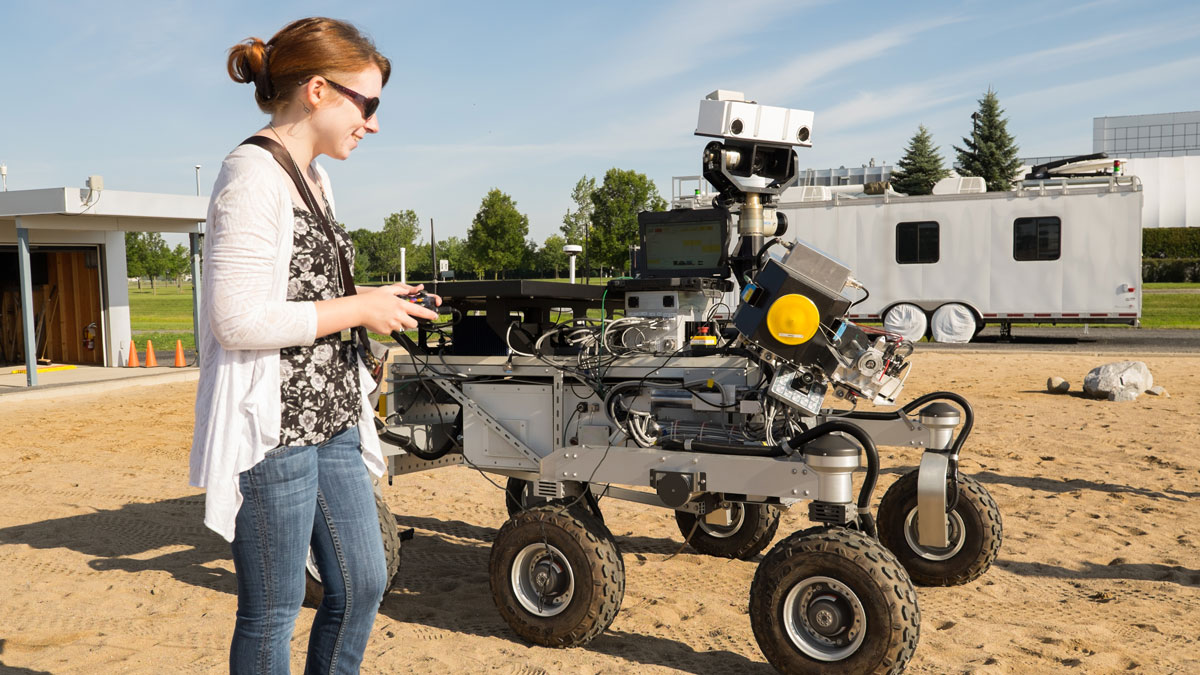When NASA deployed a small six-wheeled robot named Sojourner on Mars in 1997, space-obsessed 11-year-old Tanya Harrison was watching.
“When NASA released the little animated GIF of Sojourner driving onto the surface, I thought, ‘I want to work on Mars rovers,’” she said. “I was laser focused on that goal from there out.”
A bad experience getting a master’s degree soured her on academia. To keep connected to the world of research, she looked for jobs that used her data analysis skills.
“I started emailing people who had written the papers that I read for my [master’s] thesis and saying, ‘Hey, do you need somebody to crunch data for you?’” Harrison said. Those emails led to a job at Malin Space Science Systems, which gave her experience operating cameras on the Mars Reconnaissance Orbiter. But she realized she wanted more, which meant going back for a Ph.D. in geology and planetary science.
With doctorate in hand, Harrison fulfilled her dream of being directly involved with the Opportunity rover, along with planning the Curiosity and Perseverance rover missions. “I was on the teams advocating for both Gale and Jezero [craters], so we went to all the places that I was hoping we would go!” she said.
Meanwhile, she made a splash posting about her life as a scientist on Twitter (now X), which led to the media’s seeking her out as an expert on all things Martian. “It hit me that I could make a bigger difference by inhabiting that role in the community than if I were just a scientist,” she said.
“My underlying goal is really to get all pieces of the larger space sector working together and bene-fiting each other.”
Today Harrison works as an independent consultant for space companies based in her native Canada. She served on AGU’s Board of Directors and still works on its Finance Committee. Her current life means less Mars work but more essential Earth observation research focused on climate change.
“My underlying goal is really to get all pieces of the larger space sector working together and benefiting each other,” she said, referring to academia, government, and private industry. “Forty percent of the Canadian landmass is in the Arctic, so we have a vested interest in being a leader in climate research.”
—Matthew R. Francis (@BowlerHatScience.org), Science Writer
This profile is part of a special series in our August 2025 issue on science careers.


